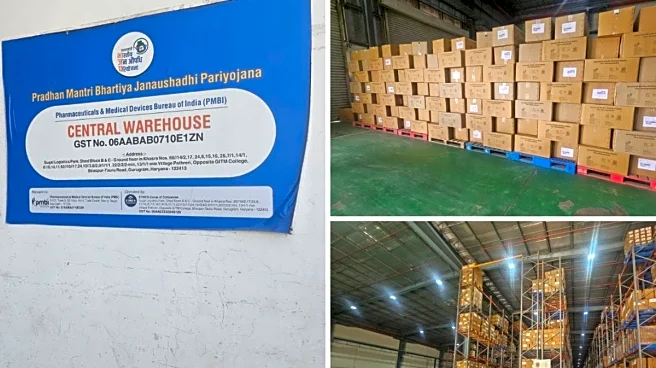What is the story about?

The
Government of India has introduced new Labour Codes to streamline and make it more contemporary to create a simplified, efficient framework that promotes ease of doing business while safeguarding workers’ rights and welfare. As per the new labour reforms, the government has now consolidated 29 labour laws into four comprehensive Labour Codes.The four Labour Codes include the Code on Wages, 2019, the Industrial Relations Code, 2020, the Code on Social Security, 2020 and the Occupational Safety, Health and Working Conditions Code, 2020.
Why This Reform?
The government says these reforms were needed for three main reasons.- First, too many different labour laws made it hard for companies to follow the rules.
- Second, several authorities handling the same issues created confusion and weak enforcement.
- And third, many labour laws were written before Independence, so they no longer match today’s economy or technology.
Labour Code 1: Code on Wages (2019)
What it does: Sets common rules for minimum wages, equal pay, bonuses and wage payments.Key Changes
- Minimum wages for all: Earlier, minimum wages applied to selected industries. Now every worker, formal or informal, is covered.
- National floor wage: The Centre will set a floor wage. States cannot fix wages below it.
- Clear criteria for fixing wages: Skill level, region, and nature of work will decide wage levels.
- No gender discrimination: Employers cannot differentiate between men, women or transgender employees in pay or hiring.
- Universal wage protection: Timely wage payment rules now apply to all employees, not just those earning below Rs 24,000 per month.
- Overtime pay: Employers must pay at least double the normal wage for any work done beyond the regular working hours.
- Responsibility for Wage Payment: Employers, whether companies, firms or associations, must ensure workers are paid on time. If wages are withheld, the employer or proprietor will be held accountable.
- Inspector-cum-Facilitator: The old “inspector” role has been redesigned to focus on helping employers comply with the law. Officials will now guide, advise and create awareness, along with carrying out enforcement.
- Compounding of Offences: Minor, first-time offences can be settled by paying a penalty instead of going to court. However, violations repeated within five years cannot be settled this way.
- Decriminalisation of Offences: Jail terms for several first-time violations have been replaced with monetary fines - up to 50% of the maximum - shifting the focus from punishment to compliance.
Who benefits:
Workers in unorganised sectors, women, fixed-term workers, and low-income employees.Who must adapt: All employers — since wage rules now apply universally.Labour Code 2: Industrial Relations Code (2020)
What it does: Sets rules for trade unions, labour disputes, layoffs, and hiring.Key Changes
- Fixed-Term Employment allowed: Workers hired on short contracts get the same pay and benefits as permanent staff. Gratuity after 1 year.
- Re-skilling fund: Workers who are retrenched will get 15 days’ wages for training.
- Trade union clarity: A union with 51% membership gets recognition.
- Worker definition expanded: Journalists, sales promotion staff and some supervisors now included.
- Layoff/closure threshold raised: Factories with up to 300 workers no longer need prior government approval.
- Women’s Representation: Ensures proportional representation of women in grievance committees for gender-sensitive redressal.
- Stricter strike rules: 14-day mandatory notice.
- Direct tribunal access: Faster dispute settlement.
- Digital records: Online systems for transparency.
- Work-from-home recognised in service sectors.
Who benefits:
Workers needing union clarity, fixed-term workers, retrenched workers.Who gains flexibility: Employers due to simpler layoff norms and digitised processes.Labour Code 3: Code on Social Security (2020)
What it does: Extends social security - PF, ESIC, maternity benefits, insurance - to more categories of workers, including gig and platform workers.Key Changes
- ESIC coverage across India: No more “notified area” restrictions; applies nationwide.
- EPF timelines fixed: Inquiries must finish in 2 years; no unlimited reopening.
- Lower deposit for appeals: EPFO appeal deposit cut to 25%.
- Gig & platform workers covered: Aggregators must contribute to their social security fund.
- Social Security Fund created: For unorganised, gig and platform workers.
- Expanded definition of dependents: Includes grandparents and in-laws.
- Uniform definition of wages: For PF, gratuity, and bonus calculations.
- Commuting accidents covered: Travel accidents treated as “employment-related.”
- Gratuity for fixed-term workers: After 1 year, instead of 5.
- Digital processes: Online registrations and inspections.
Who benefits:
Gig workers (Swiggy, Uber, Zomato), platform workers, unorganised workers, plantation workers, fixed-term staff.Who must adjust: Startups, aggregators, contractors, medium and large companies.Labour Code 4: Occupational Safety, Health & Working Conditions Code (2020)
What it does: Merges laws on safety, health, migrant workers, and working conditions.Key Changes
- Single registration: One licence and one return instead of multiple.
- Hazardous work coverage: Even an establishment with one worker can be covered.
- Defined migrant worker rights: Travel allowance, portability of ration and benefits, national database.
- Appointment letters mandatory: For clarity on wages and job terms.
- Women can work at night: With consent and safety measures.
- Working hours capped: 8 hours/day, 48 hours/week; overtime at double rate.
- Safety committees: For establishments with 500+ workers.
- Victim compensation: At least 50% of fines go directly to victims.
- Contract labour reforms: Higher thresholds and a centralised licensing system.
- Decriminalisation: More monetary penalties, fewer imprisonment clauses.
Who benefits:
Factory workers, migrant workers, women employees, construction workers, media workers.Who must adapt: Factories, construction firms, contractors, transport operators, service-sector employers.Why These Codes Matter
- They update pre-Independence labour laws to fit today’s economy.
- They aim to make compliance simpler for businesses.
- They expand social security and protections to millions of informal, gig, and contract workers.
- They promote transparency through digital systems.
- They push for worker safety, wage protection, and gender equality.
/images/ppid_a911dc6a-image-176404283496799825.webp)


/images/ppid_a911dc6a-image-17637970616167317.webp)
/images/ppid_59c68470-image-176380254088546335.webp)


/images/ppid_59c68470-image-176400757416764836.webp)

/images/ppid_59c68470-image-176398503960253839.webp)



/images/ppid_a911dc6a-image-176397523100111769.webp)

